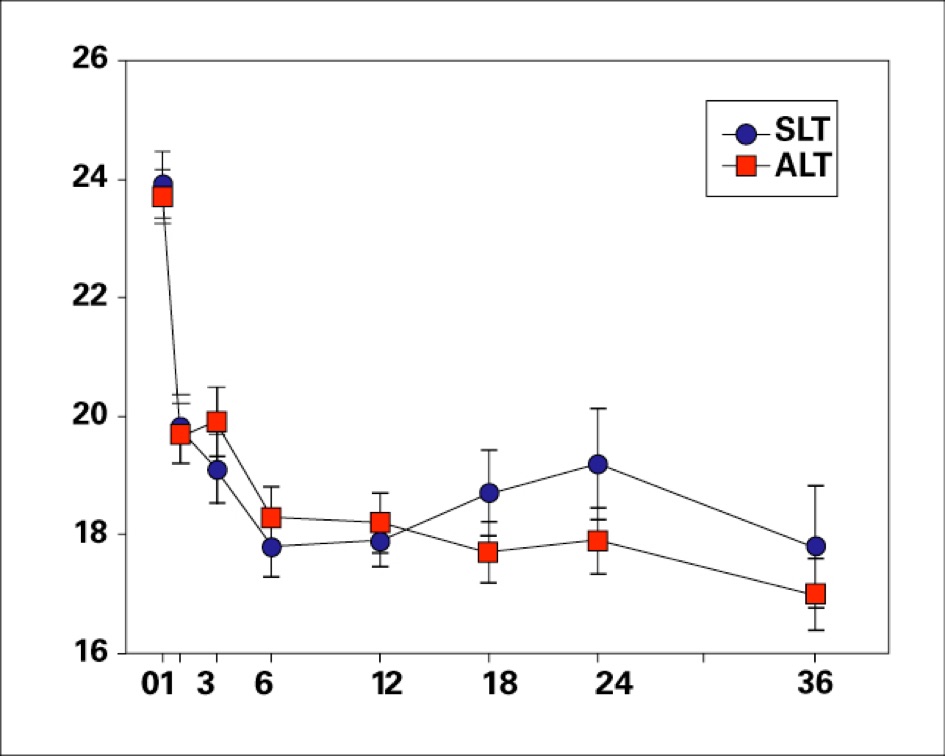The time course for IOP reduction following SLT has been highly variable, but a significant response is seen at postop day one. Most clinicians wait at least four to six weeks before deciding whether the treatment had been beneficial; in some patients the response may occur even later.
In the initial published studies, SLT was used as adjunctive therapy to medical treatment. In a large case series, Dr. Latina noted an average IOP reduction of 6 mmHg with SLT.5 In another trial in Korea, researchers achieved a mean IOP reduction with SLT of 20 percent below baseline pretreatment levels.
In a prospective, randomized clinical trial that compared ALT and SLT, the two-year year data shows equivalent 5- to 6-mmHg reduction in both groups.From this same population, three-year follow-up data has been presented confirming equivalent long-term results with ALT and SLT.
Three-year data illustrating the prolonged effects of Selective Laser Trabeculoplasty when used on a maximum-meds population (n=36 for SLT and 39 for ALT).7 An intriguing question has been whether eyes failing ALT could have a favorable response to SLT.
In a limited number of patients in several of the series the preliminary answer suggests that SLT may provide a meaningful IOP reduction in eyes unresponsive to ALT.
De Lairessestraat 59 1071 NT Amsterdam 020-679 71 55 omca@me.com www.omca.nl



Amsterdam Eye Hospital
Oogziekenhuis Amsterdam

